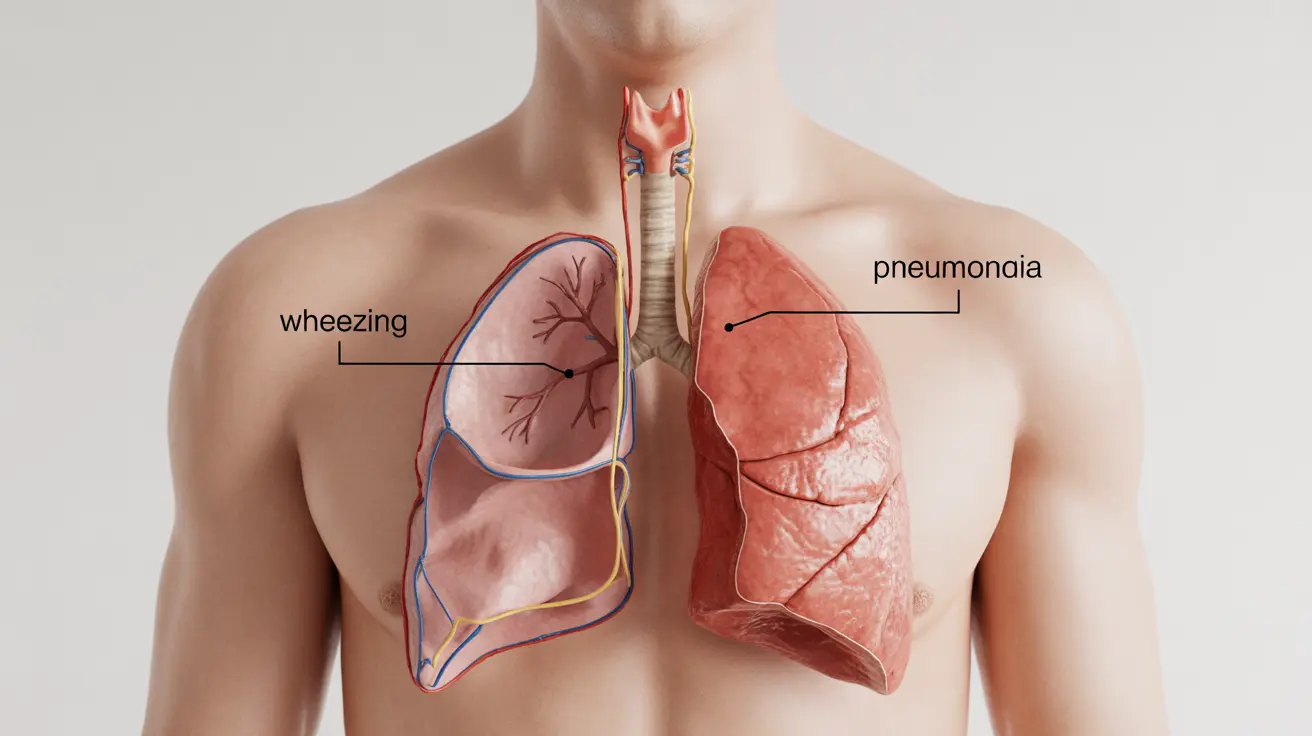Understanding the differences between RSV (Respiratory Syncytial Virus) and pneumonia in adults is crucial for proper diagnosis and treatment. While these respiratory conditions share some similarities, they have distinct characteristics that set them apart. This comprehensive guide will help you understand how to identify, distinguish between, and manage these two respiratory conditions.
Understanding RSV and Pneumonia
RSV and pneumonia are both serious respiratory conditions that can affect adults, though they have different underlying causes. RSV is a specific viral infection, while pneumonia can be caused by various pathogens, including viruses, bacteria, or fungi. Understanding these distinctions is essential for proper medical care and treatment approaches.
Distinctive Symptoms and Characteristics
RSV Symptoms in Adults
RSV typically presents with these characteristic signs:
- Runny or congested nose
- Dry cough that gradually becomes productive
- Low to moderate fever
- Wheezing
- Decreased appetite
- Fatigue and body aches
Pneumonia Symptoms in Adults
Pneumonia often shows these distinctive features:
- High fever with chills
- Severe cough with colored mucus
- Chest pain when breathing or coughing
- Rapid breathing
- Shortness of breath
- Extreme fatigue
- Confusion (especially in older adults)
Diagnostic Procedures
Healthcare providers use different approaches to diagnose these conditions:
RSV Diagnosis
- Nasal swab tests
- Physical examination
- Medical history review
- Blood tests when necessary
Pneumonia Diagnosis
- Chest X-rays
- Blood tests
- Sputum culture
- CT scan in severe cases
- Physical examination and listening to lung sounds
Risk Factors and Complications
Certain individuals are more susceptible to developing severe forms of these respiratory conditions:
High-Risk Groups
- Adults over 65
- People with weakened immune systems
- Those with chronic heart or lung conditions
- Individuals with diabetes
- Smokers
Treatment Approaches
RSV Treatment
Treatment for RSV typically focuses on symptom management:
- Rest and adequate hydration
- Over-the-counter pain relievers
- Humidifier use
- Nasal suction or saline drops
- Prescription medications in severe cases
Pneumonia Treatment
Pneumonia treatment varies based on the cause:
- Antibiotics for bacterial pneumonia
- Antiviral medications for viral pneumonia
- Oxygen therapy when needed
- Hospital admission for severe cases
- Supportive care and rest
Prevention Strategies
Both conditions can be prevented through similar measures:
- Regular hand washing
- Avoiding close contact with sick individuals
- Getting recommended vaccinations
- Maintaining good overall health
- Quitting smoking
- Regular exercise and proper nutrition
Frequently Asked Questions
What are the main symptoms that differentiate RSV infection from pneumonia in adults?
RSV typically begins with upper respiratory symptoms like runny nose and mild cough, while pneumonia often starts with more severe symptoms like high fever, chest pain, and difficulty breathing. RSV symptoms usually progress gradually, whereas pneumonia symptoms tend to be more severe from the onset.
How can doctors diagnose whether an adult has RSV or pneumonia?
Doctors use different diagnostic tools for each condition. RSV is typically diagnosed through nasal swabs and physical examination, while pneumonia diagnosis usually requires chest X-rays, blood tests, and sputum cultures to determine the exact cause and type of infection.
Who is most at risk for developing severe RSV or pneumonia as an adult?
Adults over 65, those with weakened immune systems, individuals with chronic heart or lung conditions, and people with underlying health conditions like diabetes are at highest risk for developing severe forms of both RSV and pneumonia.
Can RSV infection lead to pneumonia, and what signs should prompt seeking medical care?
Yes, RSV can develop into pneumonia in some cases. Seek immediate medical attention if you experience difficulty breathing, persistent high fever, chest pain, or if symptoms worsen despite home treatment.
What treatments and preventive measures are recommended for adults with RSV or pneumonia?
Treatment approaches differ based on the condition and its severity. RSV typically requires supportive care, while pneumonia may need antibiotics or antivirals. Prevention measures include good hygiene practices, vaccination when applicable, and maintaining overall health through proper nutrition and exercise.




